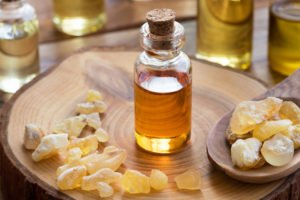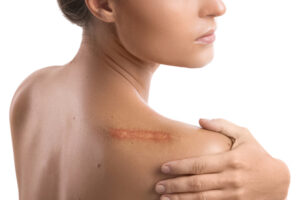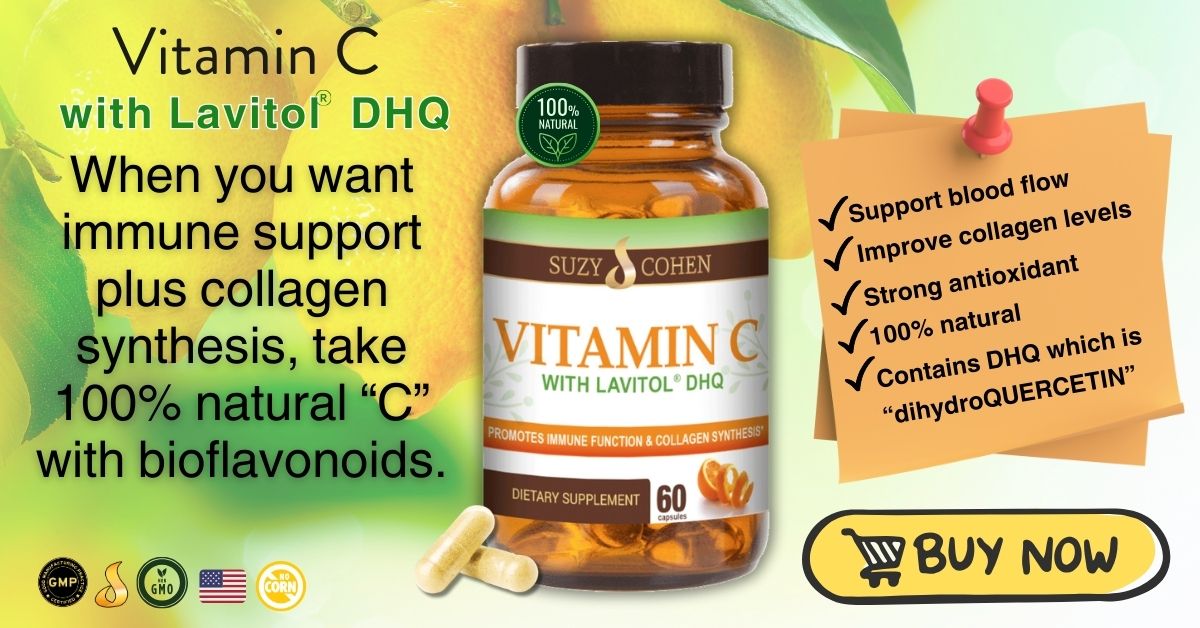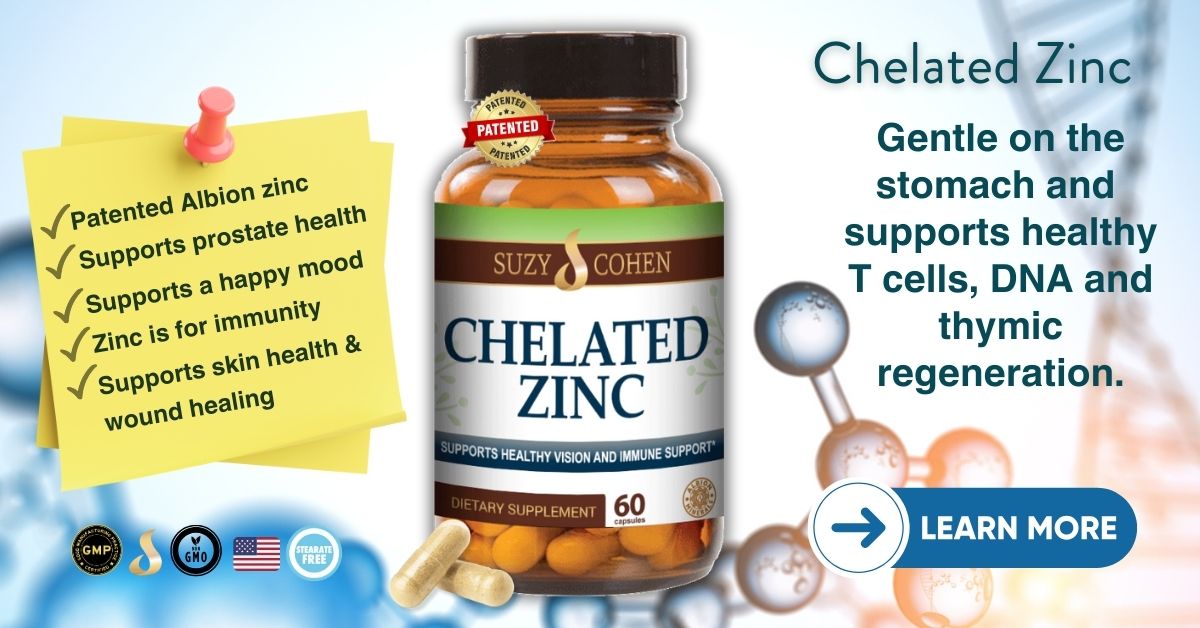What's On This Page?
ToggleOur flaws can be beautiful. They tell a story about a chapter of the life we’ve lived. But what if you don’t want your story to be told so boldly?
If you are interested in naturally reducing scar tissue, lean a little closer because I’m going to share some ways to reduce the appearance of scarring. These options tend to be most effective if you begin treatment early on, although some options might be beneficial with existing scarring. Most don’t know this but if you have a fresh scar, you can actually influence how fast it heals and how much it fades.
I’m sure we all know the basics for wound care, right: Keep it clean, keep it moist for a bit, keep it covered and try not to cause any additional trauma to the area. Let it heal! But the ways in which you can help your body heal (and reduce scar tissue) are many! Treatments for many light scars are available now. But keep in mind, others require more care. For example, some scars require a dermatologist, or surgeon to help with scar revision surgery. You see that sometimes with C-section scars that are thick, raised or red which means they are “hypertrophic.” It’s harmless, but can be easily irritated with clothing, and you may not like the appearance. No amount of essential oils below or massage or zinc, etc will help that completely go away! Sometimes laser treatment can help soften a scar, but it won’t take it completely away.
But for light scars, or newly formed ones you can try the options below. Always ask your practitioner when the time is right to begin applying topical treatments to a wound because it differs with the type of closure. For example, if you have visible stitches, versus those inside of you, or if you are glued together with Steri-Strips, other adhesives, and so forth. If the topic of skin and beauty interests you, take a moment to read 10 Novel Treatments for Chronic Itch, Eczema and Skin Infections.

Let’s start with essential oils. Here are the 6 best ways to minimize scarring:
1. Essential Oils can help with Scars
a) Carrot Seed Essential Oil – This contains potent antioxidants that act as an antibacterial and antifungal. This oil can be applied topically to help with scarring and dark spots.
b) Frankincense Oil – This minimizes inflammation. Using this oil while a wound is relatively new may help to potentially prevent any scarring at all due to its anti-inflammatory properties. If using this oil with an existing or healing scar, you’ll likely notice the scar fade some.
c) Lavender Oil – Lavender oil is a great option for a post-surgery scar given that it not only helps to reduce scarring, but has calming effects as well. Great for a bit of added relaxation after a procedure! The topical application of this oil has been seen to progress wound closure faster than some other topical solutions. Lavender oil also promotes the synthesis of collagen and protein.
d) Tea Tree Oil – This oil is great for skin health and is a known antibacterial, antifungal, antiviral and antiseptic. This oil helps fight scarring, including scars from acne, and can speed up the healing process with a fresh scar.
2. Massage
Do not massage around the scar too soon as the pressure and kneading could reopen the wound! Massaging improves blood flow, which in turn promotes pliability within the scar and reduces inflammation. This increases flexibility and allows for better range of motion. After Sam’s knee replacement, I would gently massage around the area, and the back of his knee to reduce his risk of arthrofibrosis.
Providing the scar tissue a broader range of motion through massage causes less restriction. For example, if you have a scar on your arm, the skin around the scar may become tight and restrict your range of motion somewhat. Massaging the area and thus alleviating some of that skin contracture and build-up underneath will allow you to have a more natural and complete range of motion. By reducing the build-up of tissue and allowing the area to heal with this added pliability, your scar will also likely appear less inflamed and have a reduced look to it in time.

To give yourself a little massage at home, grab some lotion or vitamin E (also good for reducing scar appearance) and massage the area in small, circular motions. Apply enough pressure to reach the muscles, but not so much pressure that it causes you pain. You can also run your finger up and down the scarred area. Doing this can help to drain any surrounding fluids in the area. Doing this for a few minutes a couple of times a day can really be quite effective. This can be done short-term or long-term for years (or as long as you like).
Many types of scars are still healing a year or so after surgery or trauma. This is not something that can only be done on a fresh wound. Massaging the area of a scar can be done for a year, or more after a scar has formed.
3. Vitamins for Scars
Vitamin C and Vitamin E are the most important vitamin nutrients. These two work in tandem to minimize raised scar formation, and act as a brightening agent – especially the C.
In a matter of months, you might notice some fading because C is a brightening agent. Citrus fruits are high in vitamin C, however, supplementation is better since you get a higher, consistent dose. Sun worshippers and smokers have a naturally strong depletion of vitamin C in the body, so this is a good nutrient to supplement with. You might be interested in my other article, What Your Skin Says About Your Health.
Vitamin E has been proven as an effective way to reduce the look of scars (and burns) and assist in the healing process. It can be used topically and ingested.

Choosing foods that are rich in Vitamin C or Vitamin E can help reduce the effects of scarring. There are other benefits to these vitamins as well, aside from their scar tissue benefits. For example, you might notice stronger nails, faster hair growth or healthier hair and nails overall. Vitamin C protects against the effects of free radicals (which can affect your heart health among other things). Generally speaking, these two vitamins are simply good for your body, blood flow, and even reproductive health. But back to our main point of conversation – scar tissue! Here’s my supplement for Vitamin C which is 100% natural and made from fruit, not from corn like most all others.
As for vitamin E, most people prefer topical application of the oil to the skin. This can get messy and may require a bandage to protect your clothes. You can also supplement or eat your way to better vitamin E status. Vitamin E is particularly useful for burn-related scars.
Some foods that are rich in natural vitamin E include:
- Almonds
- Peanuts
- Red Bell Peppers
- Spinach
- Asparagus
- Wheat Germ (and oil)
- Avocado
- Olive Oil
- Mango
- Sunflower Seeds
4. Zinc is Useful for Scars
The mineral zinc is known to be wound-healing. It’s one of my favorites and I don’t think it gets enough attention. I’m taking this right now for a couple of appendectomy scars I am trying to minimize which are between my bikini line and belly button! Deficiencies of zinc will cause wounds to linger for a long time and prevent inflammation. It may be especially helpful in post-surgical wound healing, and acne or dermatitis-related scarring. The Chelated Zinc is the best type of zinc since it’s easy on the tummy. The anti-inflammatory properties of the mineral are reasons it is useful for prostate problems as well. For that matter, zinc is useful in the creation of thyroid hormone production.
Regardless of the various uses of zinc, there are many skin-related problems that it can help in such as rosacea, eczema, skin ulcers, post-surgical scarring and acne. It comes as a surprise to most that zinc is needed for youthful skin because it helps with synthesis of collagen. It is a cofactor in the production of collagen, therefore it plays a critical role in collagen synthesis in the human body. In order for cell repair to occur, zinc (and vitamin C) is required.
Zinc deficiency is more common than you think. It is depleted by antacids, laxatives, and acid-blockers. Zinc deficiency can therefore occur in many illnesses, simply because there are so many drug muggers of it. When zinc is deficient, it will reduce the amount of collagen you produce, therefore leading to premature aging and higher risk of scar formation. About 10 to 20mg per day should be sufficient. Too much zinc supplementation (as in higher amounts for a long period of time) may cause a relative copper deficiency so be careful. More is not better.
5. Bromelain
Found in the stem and fruit of the pineapple plant, bromelain is a group of enzymes that act as an anti-inflammatory and have therapeutic value. Bromelain has also been seen to reduce pain and swelling, and ease digestive issues and muscle soreness among many other things. Bromelain is quite powerful when it comes to reducing inflammation which is why it has been used post-operatively as a natural alternative for its effectiveness in reducing edema and because it enhances the potency of antibiotics. You can buy bromelain as a dietary supplement, and if taken orally after your surgical procedure, it will help reduce pain and swelling.
You know that feeling in your mouth after you’ve eaten pineapple? That’s the bromelain working its magic on the sensitive skin inside your mouth as it attempts to break down proteins and tissue.

Think about a scar and the tissues underneath. Your scar is not only on the outside of your body but inside, too. And after surgery (or any deep scarring event), that scar has a tender, underbelly of fibrous tissue below the surface. Bromelain breaks down fibrins which prevents clotting and improves circulation. The Bromelain enzymes essentially dissolve the fibrin thereby reducing the hard tissue surrounding a scar and allowing it to heal and repair itself resulting in a reduced appearance.
This extract can be found in such forms as tablets, powder, liquids, and capsules and can be applied topically or taken orally.
6. Silicone Sheet Scar Bandages
These are great bandages to put on a spot that needs to remain flexible and bendable, for example, your neck, your knee, or your finger. The silicone sheet bandages protect the vulnerable tissue from getting scratched or nicked, plus it reduces itching. Even a well-healed scar that is a year or older might be impacted by silicone gel sheets.
Silicone bandages expedite healing and reduce scarring depth in some cases, however, they won’t be prevented altogether. This is a topical treatment, a wound covering, but over time, the effects of scarring might be reduced. The bandages sometimes consist of a chemical gel polymer and are used in several medical devices.
The gel contains self-drying technology and has been effective in reducing both the texture and color of scars when used appropriately. Because of the nature of this type of bandage, they are flexible and allow for normal movement. I like that you can use this low-cost measure to discreetly protect your incision, and minimize the appearance of scarring. Remember, these can only be used after the wound is dry, and no longer open, raw or oozing.
Silicone bandages typically contain a layer of medical-grade silicone that can be applied directly to a scar that has dried, and it helps to reduce redness, itching, and discomfort associated with the healing process. They are available in various sizes and shapes and can be easily cut to fit the scar. They are also waterproof and can be worn under clothing. It is important to follow the manufacturer’s instructions for use for whatever brand you buy, and consult with a doctor or healthcare professional before using a silicone scar bandage if you are uncertain about your individual scar.
Some disadvantages exist, and I’ll share those now.
- Cost: Silicone scar bandages can be more expensive than traditional adhesive bandages.
- Allergic reactions: Some people may experience an allergic reaction to the silicone in the bandage, but also, one can be allergic to latex in regular bandages too!
- Limited use: Silicone scar bandages are typically only recommended for use on scars that are fully healed and closed. They should not be used on open wounds or actively healing scars.
- May not be suitable for all types of scars: Some people may not see results or may find that silicone scar bandages are not suitable for their particular type of scar.
- Skin irritation: Some people may experience skin irritation or itching from wearing the bandage for an extended period of time.
- Staining: Silicone scar bandages may stain clothing or bedding if they come into contact with the material.
Not all scars are the same, and not all of them can be treated with the simple methods above.
Some scars can be helped by what’s called “scar revision surgery” and your doctor can share more about that with you.
But it can’t hurt to give any of these scar-reducing options a try. If you gain back a little bit of your confidence, it’s rewarding. If you feel happier in your own skin, it’s worth it!

Suzy Cohen, has been a licensed pharmacist for over 30 years and believes the best approach to chronic illness is a combination of natural medicine and conventional. She founded her own dietary supplement company specializing in custom-formulas, some of which have patents. With a special focus on functional medicine, thyroid health and drug nutrient depletion, Suzy is the author of several related books including Thyroid Healthy, Drug Muggers, Diabetes Without Drugs, and a nationally syndicated column.



